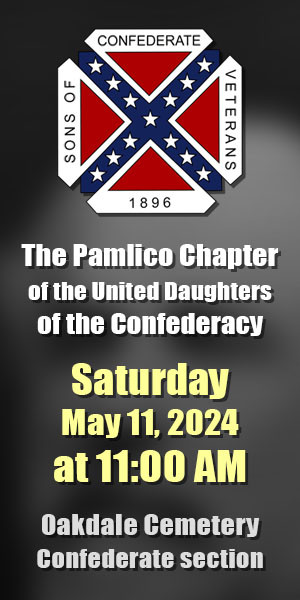The Shell Game of Corrupted Government Exposed
Leandro measures will fail under current governance system
Publisher's note: The author of this post is Dr. Terry Stoops, who is director of research and education studies for the John Locke Foundation.
Roy Cooper observed that "it doesn't work too well."
John Hood noted that its policies "confuse the public and confound effective management."
Scott Mooneyham called it an "idiotic farce."
All three comments refer to education governance in North Carolina, a system that fails to clearly define the roles and responsibilities of the various entities that oversee our system of public schools.
Many North Carolinians assume that the elected superintendent of public instruction is the head of the state's public schools. After all, the superintendent is the most visible representative of North Carolina's public schools. But the N.C. Constitution grants the State Board of Education the power to "supervise and administer the free public school system and the educational funds provided for its support" and "make all needed rules and regulations in relation thereto, subject to laws enacted by the General Assembly."
The lieutenant governor, state treasurer, and 11 appointed members of the State Board of Education, who are nominated by the governor and confirmed by the General Assembly, are voting members. The state superintendent is not. As the "secretary and chief administrative officer of the State Board of Education," the superintendent acts primarily as a liaison between public schools and members of the State Board. Both are responsible for carrying out laws approved by the General Assembly and occasionally advise the governor.
If you are still confused, here is how the N.C. Supreme Court explains the arrangement in a recent case, North Carolina State Board of Education v. The State of North Carolina and Mark Johnson, dealing directly with the ambiguity:
The court's delineation of the governance structure was so crystal clear that both the plaintiff and defendants declared victory. Of course, it's not the Supreme Court's fault that a flowchart describing North Carolina's system of public school oversight resembles a Jackson Pollock painting.
North Carolina is not the only state with this arrangement. According to a 2017 study by the Education Commission of the States, North Carolina is one of ten states where voters elect the superintendent of public instruction and the elected governor appoints members of the state board of education. The most popular model of governance gives the governor the ability to appoint members of the state board of education, who, in turn, appoints the superintendent. Another popular model allows the governor to appoint both the members of the state board of education and the superintendent of public instruction.
For the last four decades, elected officials have proposed legislation and constitutional amendments that would have moved North Carolina closer to one of the superintendent appointment models mentioned above. Other ideas to improve education governance included the addition of members appointed to the State Board of Education by the General Assembly. The proposed changes led to irreconcilable disagreements between the legislative and executive branches and resistance from the sitting superintendent and State Board members. As a result, the underlying governance structure remained unchanged.
Because of Leandro, the issue of governance is more important than ever
Leandro v. State of North Carolina is a 1994 lawsuit that centers on the state's constitutional duty to provide an "opportunity for a sound basic education" to all public school students. While the N.C. Supreme Court decided the case in 1997, the case was remanded to the trial court to monitor the state's compliance with the ruling. In 2016, retired Superior Court Judge David Lee was appointed to oversee the case.
In 2017, the plaintiffs and defendants agreed to allow an independent consultant to advise Judge David Lee on how to proceed. They selected California-based consultant WestEd to recommend an action plan. In December, WestEd released a 300+ page report titled Sound Basic Education for All: An Action Plan for North Carolina. The report includes dozens of recommendations designed to improve the quality of the teacher and administrator workforce, modernize school finance systems, tweak school and district accountability systems, and expand early childhood programs. Last month, Judge David Lee issued a 34-page order that affirmed the findings of the report, setting the stage for further court action in April.
The plaintiffs, defendants, and proponents of court action are eager to push ahead with consent orders that will compel the state to implement WestEd recommendations, despite the fact that North Carolina's disjointed system of governance likely will mar implementation of WestEd's far-reaching $8 billion plan.
To complicate matters, the State Board of Education is the only government entity that is a party to the Leandro lawsuit. The General Assembly (which formulates the state budget), the superintendent of public instruction (the administrative head of the Department of Public Instruction), and the N.C. Community College and UNC System boards (which may be tasked with modifying teacher training efforts) are on the outside looking in. The governor is in a quantum superposition, whereby he is both directly involved (through his appointments to the State Board and the ability to veto legislation) and not directly involved (because he does not establish or implement statewide education policy).
If conditions aren't right, the court must hold tight
In 1993, Gov. James Hunt remarked, "The big problem in education and state government today is that the buck doesn't stop anywhere." Twenty-five years later, Mebane Rash, CEO and editor-in-chief of EducationNC and the N.C. Center for Public Policy Research, echoes Gov. Hunt's sentiment,
So, this raises a critical question. Why would the state embark on a massive expansion of its public school apparatus without first determining who is in charge, and thus ultimately accountable, for its implementation?
The good news is that members of the N.C. Senate may be willing to make a change. WUNC reports that "[Republican State Senator Chuck] Edwards and GOP Senate Leader Phil Berger have both indicated they would like to restructure educational leadership in the state." This may indicate that the General Assembly will introduce a constitutional amendment dealing with education governance in the upcoming short session.
Until governance issues are resolved, Judge Lee should adhere to a simple principle: If conditions aren't right, the court must hold tight.
Note: An earlier version identified 1995 as the year for Gov. Hunt's quote. This was a transcription error. The quote is from 1993.
Go Back
Roy Cooper observed that "it doesn't work too well."
John Hood noted that its policies "confuse the public and confound effective management."
Scott Mooneyham called it an "idiotic farce."
All three comments refer to education governance in North Carolina, a system that fails to clearly define the roles and responsibilities of the various entities that oversee our system of public schools.
Many North Carolinians assume that the elected superintendent of public instruction is the head of the state's public schools. After all, the superintendent is the most visible representative of North Carolina's public schools. But the N.C. Constitution grants the State Board of Education the power to "supervise and administer the free public school system and the educational funds provided for its support" and "make all needed rules and regulations in relation thereto, subject to laws enacted by the General Assembly."
The lieutenant governor, state treasurer, and 11 appointed members of the State Board of Education, who are nominated by the governor and confirmed by the General Assembly, are voting members. The state superintendent is not. As the "secretary and chief administrative officer of the State Board of Education," the superintendent acts primarily as a liaison between public schools and members of the State Board. Both are responsible for carrying out laws approved by the General Assembly and occasionally advise the governor.
If you are still confused, here is how the N.C. Supreme Court explains the arrangement in a recent case, North Carolina State Board of Education v. The State of North Carolina and Mark Johnson, dealing directly with the ambiguity:
- A "plain meaning" construction of the relevant constitutional provisions seems to us to clearly provide that the Board has the constitutionally based responsibility for the general supervision and administration of the public school system; that the Superintendent has the constitutionally based responsibility for directly administering the operations of the public school system; and that the General Assembly has the authority to make ultimate educational policy determinations and to enact legislation providing for the management and operation of the public school system, so long as that legislation does not deprive the Board of responsibility for the general supervision and administration of the public school system or deprive the Superintendent of the responsibility for directly administering the operations of that system.
The court's delineation of the governance structure was so crystal clear that both the plaintiff and defendants declared victory. Of course, it's not the Supreme Court's fault that a flowchart describing North Carolina's system of public school oversight resembles a Jackson Pollock painting.
North Carolina is not the only state with this arrangement. According to a 2017 study by the Education Commission of the States, North Carolina is one of ten states where voters elect the superintendent of public instruction and the elected governor appoints members of the state board of education. The most popular model of governance gives the governor the ability to appoint members of the state board of education, who, in turn, appoints the superintendent. Another popular model allows the governor to appoint both the members of the state board of education and the superintendent of public instruction.
For the last four decades, elected officials have proposed legislation and constitutional amendments that would have moved North Carolina closer to one of the superintendent appointment models mentioned above. Other ideas to improve education governance included the addition of members appointed to the State Board of Education by the General Assembly. The proposed changes led to irreconcilable disagreements between the legislative and executive branches and resistance from the sitting superintendent and State Board members. As a result, the underlying governance structure remained unchanged.
Because of Leandro, the issue of governance is more important than ever
Leandro v. State of North Carolina is a 1994 lawsuit that centers on the state's constitutional duty to provide an "opportunity for a sound basic education" to all public school students. While the N.C. Supreme Court decided the case in 1997, the case was remanded to the trial court to monitor the state's compliance with the ruling. In 2016, retired Superior Court Judge David Lee was appointed to oversee the case.
In 2017, the plaintiffs and defendants agreed to allow an independent consultant to advise Judge David Lee on how to proceed. They selected California-based consultant WestEd to recommend an action plan. In December, WestEd released a 300+ page report titled Sound Basic Education for All: An Action Plan for North Carolina. The report includes dozens of recommendations designed to improve the quality of the teacher and administrator workforce, modernize school finance systems, tweak school and district accountability systems, and expand early childhood programs. Last month, Judge David Lee issued a 34-page order that affirmed the findings of the report, setting the stage for further court action in April.
The plaintiffs, defendants, and proponents of court action are eager to push ahead with consent orders that will compel the state to implement WestEd recommendations, despite the fact that North Carolina's disjointed system of governance likely will mar implementation of WestEd's far-reaching $8 billion plan.
To complicate matters, the State Board of Education is the only government entity that is a party to the Leandro lawsuit. The General Assembly (which formulates the state budget), the superintendent of public instruction (the administrative head of the Department of Public Instruction), and the N.C. Community College and UNC System boards (which may be tasked with modifying teacher training efforts) are on the outside looking in. The governor is in a quantum superposition, whereby he is both directly involved (through his appointments to the State Board and the ability to veto legislation) and not directly involved (because he does not establish or implement statewide education policy).
If conditions aren't right, the court must hold tight
In 1993, Gov. James Hunt remarked, "The big problem in education and state government today is that the buck doesn't stop anywhere." Twenty-five years later, Mebane Rash, CEO and editor-in-chief of EducationNC and the N.C. Center for Public Policy Research, echoes Gov. Hunt's sentiment,
- Ask yourself, "who is in charge when it comes to education?" We have the governor, the Governor's Education Cabinet, the legislature, the UNC system with 17 campuses, the community college system with 58 campuses, 36 more independent colleges and universities, the State Board of Education, the Superintendent of Public Instruction, the school boards and superintendents in 115 school districts, 198 charter schools with 12 more on the way, and 100 county commissions that fund local education. When it is not clear who is in charge, it is not clear who is accountable.
So, this raises a critical question. Why would the state embark on a massive expansion of its public school apparatus without first determining who is in charge, and thus ultimately accountable, for its implementation?
The good news is that members of the N.C. Senate may be willing to make a change. WUNC reports that "[Republican State Senator Chuck] Edwards and GOP Senate Leader Phil Berger have both indicated they would like to restructure educational leadership in the state." This may indicate that the General Assembly will introduce a constitutional amendment dealing with education governance in the upcoming short session.
Until governance issues are resolved, Judge Lee should adhere to a simple principle: If conditions aren't right, the court must hold tight.
Note: An earlier version identified 1995 as the year for Gov. Hunt's quote. This was a transcription error. The quote is from 1993.
| Two NYPD Officers Shot, Wounded in Two Separate ‘Assassination Attempts’ in the Bronx | John Locke Foundation Guest Editorial, Editorials, Op-Ed & Politics | The Corruption of the Conservative Republican |





















